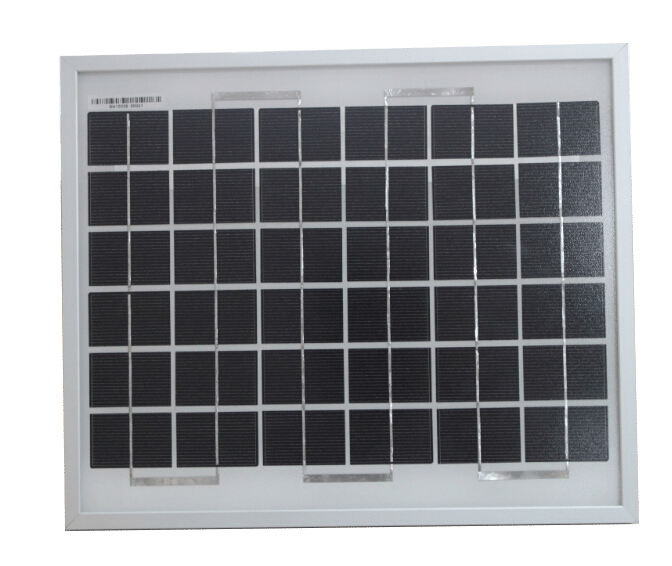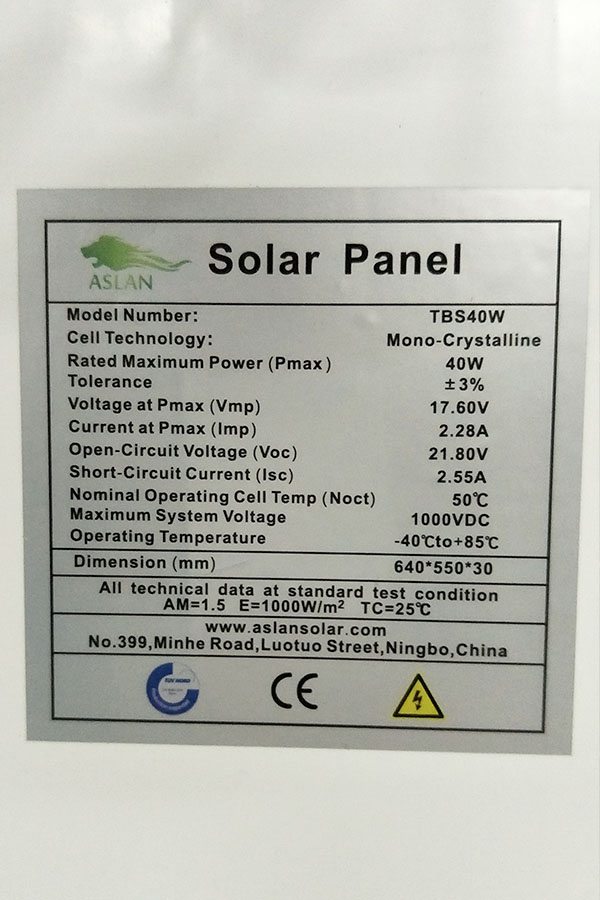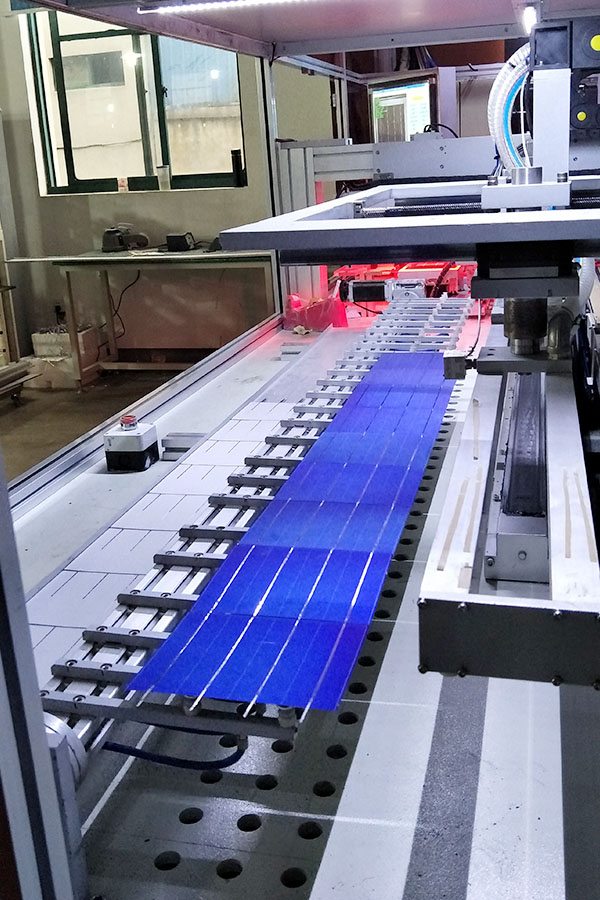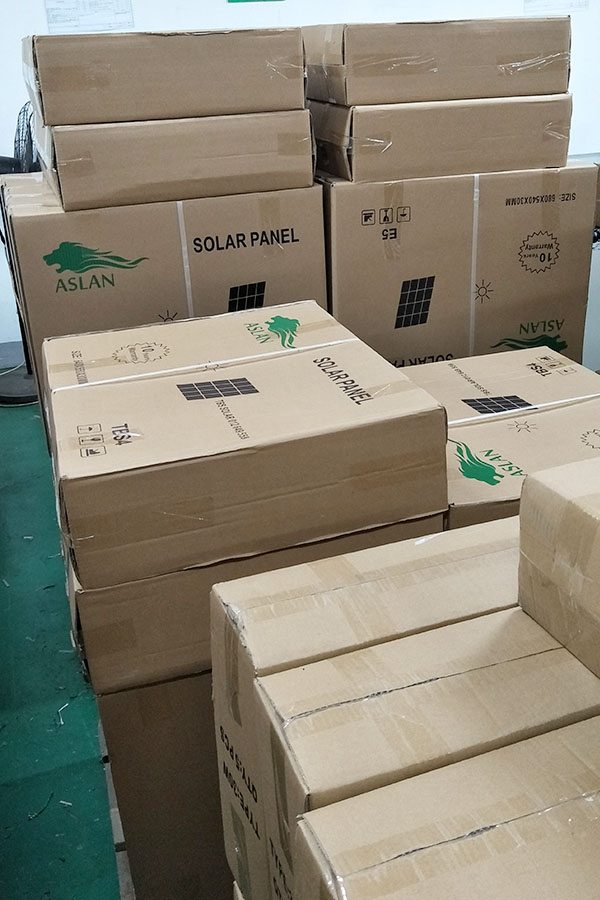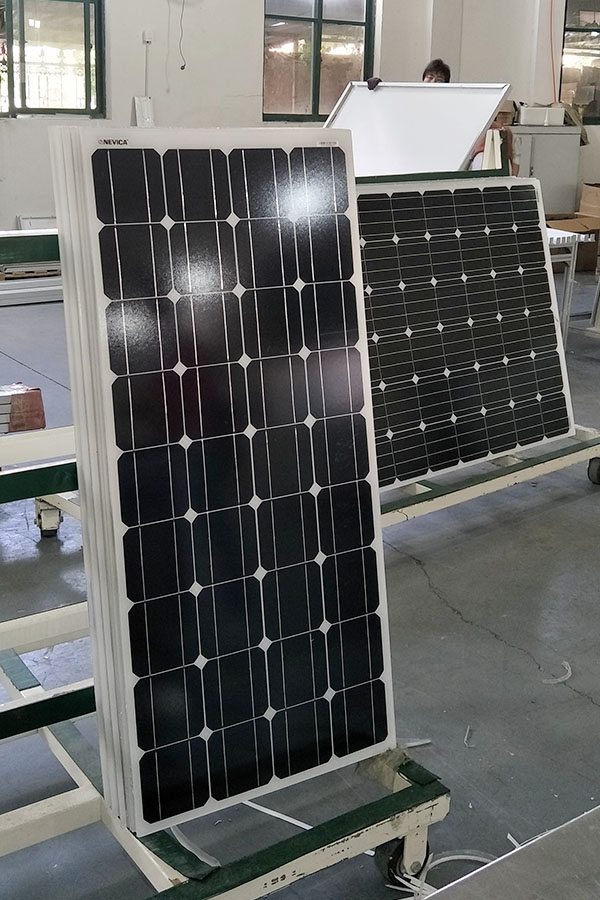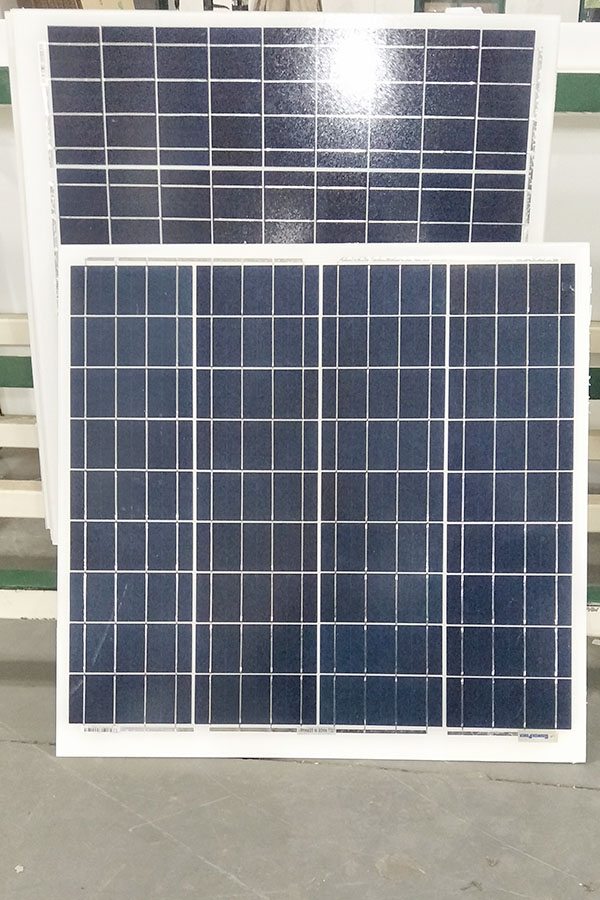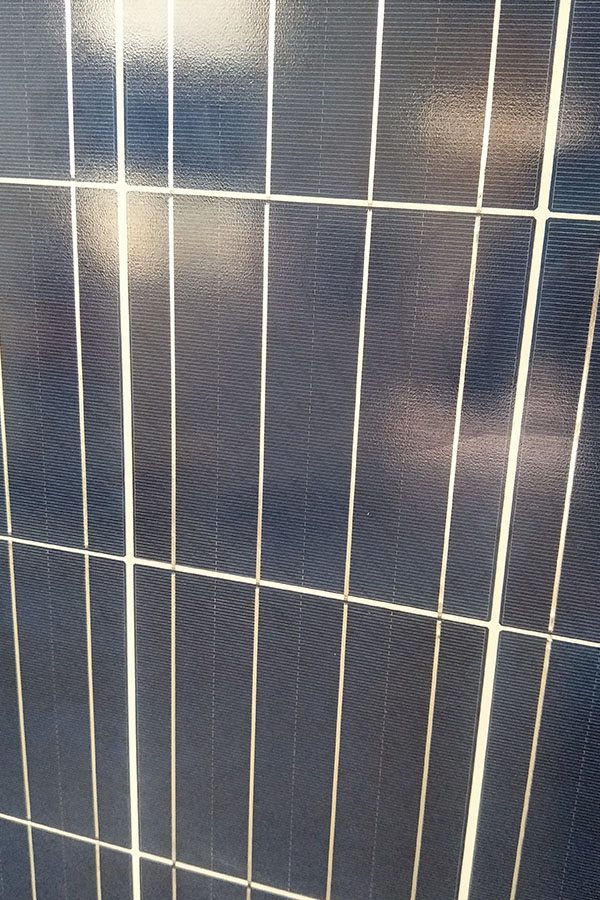New Fashion Design for Mono-Crystalline 10W Solar Panel Factory in Naples
Short Description:
We are convinced that with joint efforts, the business between us will bring us mutual benefits. We can assure you product quality and competitive price for New Fashion Design for Mono-Crystalline 10W Solar Panel Factory in Naples, If you are interested in any of our items, please don't hesitate to contact us and take the first step to build up a successful business relationship.
Mono-Crystalline 10W Solar Panel
Technical parameter
Maximum Power(W) 10W
Optimum Power Voltage(Vmp) 17.56V
Optimum Operating Current(Imp) 0.58A
Open Circuit Voltage(Voc) 21.35V
Short Circuit Current(Isc) 0.64A
Mechanical Characteristics
Cell Type Mono-crystalline 52x35mm
No of Cell 36 (4x9pcs)
Dimensions 250x370x17mm
Weight 1.2Kg
Front Glass 3.5mm,High Transmission, Low Iron,Tempered Glass
Junction box IP65 Rated
Output Cable TUV 1×4.0mm2/UL12AWG,Length:900mm
Temperature and Coefficients
Operating Temperature(°C): -40°C ~ + 85°C
Maximum System Voltage: 600V(UL)/1000V(IEC) DC
Maximum Rated Current Series: 15A
Temperature Coefficients of Pmax: -0.47%
Temperature Coefficients of Voc: -0.389%
Temperature Coefficients of Isc: 0.057%
Nominal Operationg Cell Temperature (NOCT): 47+/-2°C
Materials of solar panel
1).Solar Cell——Mono-crystalline solar cell 52*35mm
2).Front Glass——-3.2mm, high transmission, low iron, tempered glass
3).EVA——-excellent anti-aging EVA
4).TPT——-TPT hot seal made of flame resistance
5).Frame——anodized aluminum profile
6).Junction Box——-IP65 rated, high quality, with diode protection
Superiority: high quality anodized aluminum frame, high efficiency long life, easy installation, strong wind resistance, strong hail resistance.
Features
1. High cell efficiency with quality silicon materials for long term output stability
2. Strictly quality control ensure the stability and reliability, totally 23 QC procedures
3. High transmittance low iron tempered glass with enhanced stiffness and impact resistance
4. Both Poly-crystalline and Mono-crystalline
5. Excellent performance in harsh weather
6. Outstanding electrical performance under high temperature and low irradiance
Quality assurance testing
Thermal cycling test
Thermal shock test
Thermal/Freezing and high humidity cycling test
Electrical isolation test
Hail impact test
Mechanical, wind and twist loading test
Salt mist test
Light and water-exposure test
Moist carbon dioxide/sulphur dioxide
https://www.fiberoptics4sale.com
Most of today’s electronic devices are made with single crystal silicon. But silicon never occurs alone in nature as an element, so how do we make it?
Silicon is the second most abundant element in the earth’s crust, but they mainly exist as silica, impure SiO2, and silicates, Si + O + another element. Normal sand and the sand used in the building industry is usually colored red, yellow or orange due to the presence of impurities, and we don’t use them. Instead, what we need is silica sand, or high purity quartz rock, which we get from quarrying. Ideally the silica has low concentrations of iron, aluminum and other metals.
The process of silicon purification is illustrated in this flow chart.
The silica sand powder is heated together with carbon in an electric furnace to 1,800°C. Carbon pulls the oxygen away from silicon dioxide and becomes carbon dioxide, leaving behind low-grade impure silicon. The silicon is then treated with oxygen to remove impurities such as calcium or aluminum, leaving up to 99% pure silicon.
This silicon is still not pure enough for semiconductor chipmakers. So it is ground into a fine powder, mixed with hydrogen chloride and heated at 300 degrees C. This process yields Trichlorosilane , HSiCl3, a liquid at room temperature.
The above process also creates chlorides of unwanted elements such as iron, aluminum, boron and phosphorus. The HSiCl3 has a low boiling point of 31.8 °C and distillation is used to purify the HSiCl3 from theimpurity halides.
Then this high-purity trichlorosilane, HSiCl3, is vaporized in hydrogen atmosphere at 1,100 degrees C for 200~300 hours. The reaction takes place inside large vacuum chambers and the silicon is deposited onto electrically heated thin polysilicon rods, small grain size silicon, to produce high-purity polysilicon rods of diameter 150-200mm. This electronic-grade silicon has purity of 99.999999%, eight nines.
The previous steps produced ultra-pure silicon, however, it is not single crystal silicon, crystalline, instead it is polysilicon, polycrystalline, and is composed of lots of small silicon crystals and the boundaries between them can cause trouble with electronic signals. So we have to convert it to large single crystal silicon, crystalline.
The resulting polysilicon rods from last page are broken up to feed the crystallization process. This process is called the Czochralski method.
The ultra-pure polycrystalline silicon is placed in a quartz crucible and molten in an inert atmosphere.
A small single crystal, or Si “seed” crystal, is clamped to a metal rod with the normal to its bottom carefully aligned along a pre-determined direction, typically 111 or 100 direction.
The “seed” crystal is dipped into the melt. Once thermal equilibrium is achieved, the temperature of the melt close to the seed crystal is reduced, and silicon from the melt begins to freeze out onto the seed crystal, forming a perfect extension of the seed crystal.
The seed crystal is slowly rotated in the opposite direction to the rotation of the crucible and withdrawn from the melt; this allows more and more silicon to freeze out on the bottom of the growing crystal.
The resulting large, cylindrically shaped single crystal of silicon is typically 4 to 6 inches in diameter and 1 to 2 meters in length.
We will briefly introduce the process for making silicon wafers used for semiconductor device fabrication.
First, the cylindrical single crystal silicon rod is cut with diamond-edged saw to create very thin wafers. The sharp edges are then smoothed to prevent from chipping.
The wafers surfaces are polished using an abrasive slurry until the wafers are flat to a tolerance of two thousandths of a millimeter.
The wafer is then etched with a mixture of nitric, hydrofluoric and acetic acids to create an even smoother surface.
Preparing for our sail to Eleuthera to check in at Spanish Wells, finishing up the last few days of a week under quarantine in West Bay near Nassau in the Bahamas.
Mike writes ‘blurbs’ about his travels sailing singlehanded on his 30 foot wooden boat check them out at http://PavitiTern.com
Home http://FollowEscape.com
Instagram – http://instagram.com/s_v_escape
Twitter – http://twitter.com/SV_Escape
Facebook – http://Facebook.com/svEscape
Escape – Episode 35 Season 1
Sailing Vessel Escape
1981 C&C 36 refit and recondition project
All our gear & NEW Escape schwag
http://FollowEscape.com/Gear
Photography Gear
GoPro Hero4 Black http://amzn.to/2iffVIr
GoPro Hero5 Black http://amzn.to/2ifjyOk
iPhone 6 Plus http://amzn.to/2ifgjXp
Canon 70D http://amzn.to/2ifjm1J
Canon 80D & 18-135mm http://amzn.to/2hHH1uK
Osmo http://amzn.to/2hTqLEK
Manfrotto 190 Tripod http://amzn.to/2if9Tr4
Rode VideoMic Pro http://amzn.to/2hUXETW
Dead Cat for Rode Mic http://amzn.to/2hTpVIk
Navigation
Raymarine a97 http://amzn.to/2hUX1dd
Raymarine EV-100 Wheel Autopilot for Sailboats http://amzn.to/2ifiOc1
Raymarine HD Radar http://amzn.to/2i0OMcH
Sonar/depth & temperature transducer, paddle speed transducer
Navionics Platinum+ Cartography http://amzn.to/2ifkKRL
C-MAP Explorer Charts for the Bahamas http://amzn.to/2hHALmP
Navionics iPhone App for wifi chart updates to Raymarine a97 and transferring routes and waypoints
RayView Android app 40″ LG LED TV for viewing navigation information in the salon from the a97 via wifi
RayControl Android App on dedicated Samsung Galaxy Note 2 for controlling the a97 via wifi while in the salon
2015 27″ 5k iMac http://amzn.to/2iffDkv
Polar View with USB GPS and NOAA ENC (vector) and Raster Charts from Maine to South America, Active Captain Database & GRIB files
AquaMap iPhone app for Active Captain database access
Skipper Bob’s Anchorages along the Intracoastal Waterway http://amzn.to/2hr2V2j
Paper Cruising Guides from Maine to the Bahamas
Christian Williams Alone Together http://amzn.to/2hr2NQ8
Solar
Renogy (4) 250W Watt 1000W Monocrystalline Solar Panels http://amzn.to/2hr2Qvi
Renogy 40 Amp MPPT Charge Controller http://amzn.to/2hV1lt3
Tracer 30 Amp MPPT Charge Controller http://amzn.to/2hUVbsS
Remote Display for Charge Controller http://amzn.to/2h1CQWu
Outback 80a Charge Controller http://amzn.to/2ifjZbr
Comms
Spot Tracker http://amzn.to/2i0Dfdt
4g cell phone booster for Verizon http://amzn.to/2ifm6vZ
Weather & Passage Planning
PocketGRIB – Download GFS weather GRIBS to your iPhone to view offline
Storm Radar – Created by Weather Underground for iPhone & Android
FastSeas – Weather routing and passage planning
Music
Jebase https://soundcloud.com/jebasemusic
Ehrling https://soundcloud.com/ehrling
JNSN https://soundcloud.com/nik-jensen-5
